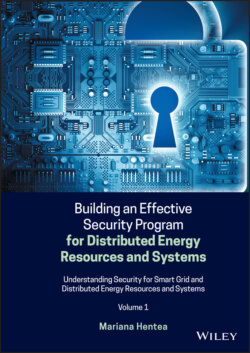Читать книгу Building an Effective Security Program for Distributed Energy Resources and Systems - Mariana Hentea - Страница 31
1.3.5 Virtual Power Plant
ОглавлениеA VPP is an operating concept where a group of DERs that are geographically disperse (e.g. associated with different utility meters, residing on different feeders, or not having clearly defined electrical boundaries) is aggregated and coordinated to act as a single entity (see Figure 1.15). This technology concept can include any combination of individual grid‐enabled customer resources (e.g. DG, EVs, and energy storage) or integrated resources (e.g. smart buildings and microgrids). Additionally, the control of the aggregated resources is accomplished through a mix of strategies and signals that can involve markets [Zurborg 2010].
Figure 1.15 VPP schematic view.
Source: [OECD 2012b]. © 2012, OECD.
The main components of a VPP are interconnected control and management devices as well as an integrated software management system. A software platform, such as a distributed energy resource management system (DERMS), can be used to implement the VPP concept [Saadeh 2015].
The concept of connected VPP is shown in Figure 1.16. An integrated and interoperable DRMS with various utility DMSs makes it possible to use VPP for purposes such as:
Optimize distribution system conditions
Aggregate various DR to provide services to the bulk transmission system
Figure 1.16 Illustration of connected virtual power plants.
Source: [DOE 2015b]. Public Domain.
Advances in communication, modeling, and controls are needed to use this technology more broadly.
Examples of information systems for Smart Grid and DER systems are further discussed in the book.
